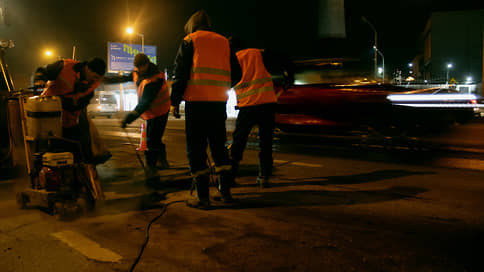The accident rate was associated with the lack of pits – Newspaper Kommersant No. 44 (7489) dated 03/16/2023
[ad_1]

The renewal of asphalt pavement on Russian roads often causes an increase in deaths in road accidents, the Accounts Chamber said. The new coating encourages drivers to drive fast, the auditors explain, while barriers, lighting and markings necessary for traffic safety will appear later. This problem was previously announced in the traffic police against the backdrop of the implementation of the national project “Safe High-Quality Roads”.
The situation with the repair of roads was discussed on Wednesday, March 15, as part of a meeting of the State Duma Committee on Transport with the participation of Minister of Transport Vitaly Savelyev. In 2022, according to Mr. Savelyev, 26.8 thousand km (+6% by 2021) of federal and regional roads were repaired and 1.6 thousand km (+15%) of roads were built. Representatives of the Accounts Chamber (CA), who were also invited to take part in the event, spoke out with criticism. “Where the roads are in excellent condition, where repairs and overhauls have taken place, mortality increases,” auditor Valery Bogomolov warned. “People start to drive faster, and additional lighting, markings and warnings are not installed immediately.” He expressed hope that the comments of the joint venture would be taken into account in further work.
Mr. Bogomolov did not provide statistics confirming this statement. The Accounts Chamber could not provide additional materials to Kommersant. The traffic police data does not confirm the words of the auditor: in 2022, mortality on federal highways fell by 8.3%, on roads of regional and intermunicipal significance – by 1.4%. At the same time, there are a number of regions where the number of deaths on the regional network has increased (for example, the Lipetsk region, Yakutia, the Republic of Khakassia). The main part of Russian roads, we recall, has been repaired since 2018 as part of the Safe High-Quality Roads (BKD) national project, which will be implemented until 2030. More than 50% of regional routes, according to the Accounts Chamber, already comply with the established standards.
This is not the first time that the authorities have been talking about the problem of high mortality after repairs. In many projects for the repair of road sections, there are not enough traffic safety measures (installation of lighting poles, separation barriers, pedestrian crossings, etc.), told in October 2022, the head of the traffic police, Mikhail Chernikov.
“This is wrong,” he stressed. “The smoother the road, the higher the severity of the consequences.” The head of the State traffic inspectorate urged to legislate the list of mandatory work that should take place along with the replacement of the coating. In 2018, the Ministry of Transport issued guidelines on “directing funds for road safety activities.” This document states that the money from the collected fines should be directed to traffic lights, markings, sidewalks, but it is not mandatory.
Reducing mortality is one of the “priority” tasks of the BKD national project, Kommersant was assured in the press service of Rosavtodor, for this various measures are provided for “arranging road infrastructure elements.” In 2022, in particular, more than 195,000 road signs, 2,300 traffic lights, and 1.5 million linear meters of sidewalks were installed at BKD facilities. In 49 agglomerations, according to Rosavtodor, intelligent transport systems were introduced (including traffic light synchronization systems, traffic police cameras, etc.). The agency cites as an example the Sakhalin region, where after the installation of new signs, traffic lights, markings and cameras on regional roads, the death rate decreased by 16% over the year, as well as Chechnya, where the same indicator decreased by 39%.
The problem identified by the joint venture exists from the moment when the BKD national project was just launched, Alexander Vasiliev, coordinator of the Map of Dead Roads project, confirms. “For many heads of municipalities, the main thing was to eliminate potholes and make a smooth road, they didn’t think about the rest,” he says. “As a result, the roadway was often a runway, sometimes even without markings. Not surprisingly, the increase in speed led to accidents. There were cases when markings were applied at the objects of the BKD, adds Alexander Vasiliev, but it was quickly erased or was not visible in the dark. “It was important for local officials how many meters were painted over with markings, and not its properties,” the expert explained to Kommersant.
“Roads with heavy traffic need to be reconstructed comprehensively — not just change the asphalt, but widen it, install at least a barrier fence,” adds Piotr Shkumatov, Blue Buckets traffic coordinator.
Earlier, the Accounts Chamber announced problems with the quality of road repairs. In 2022, auditors took samples of asphalt concrete pavement on 50 sections of roads and streets repaired in 2019–2021 in the Kirov, Smolensk and Yaroslavl regions: 19 samples taken did not meet the requirements, including the content of “air voids and water saturation” in the asphalt, spoke in SP. “Three samples of asphalt concrete obtained at repair sites in 2019–2020 of regional roads in the Smolensk region crumbled during the test when dried to constant weight,” Kommersant was told in the Accounts Chamber.
[ad_2]
Source link








